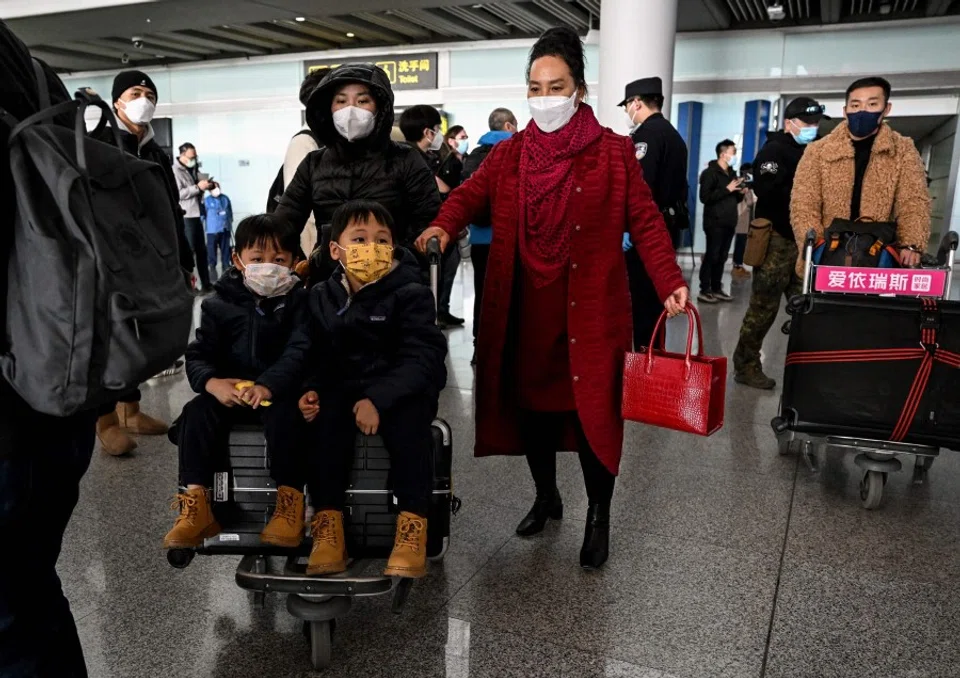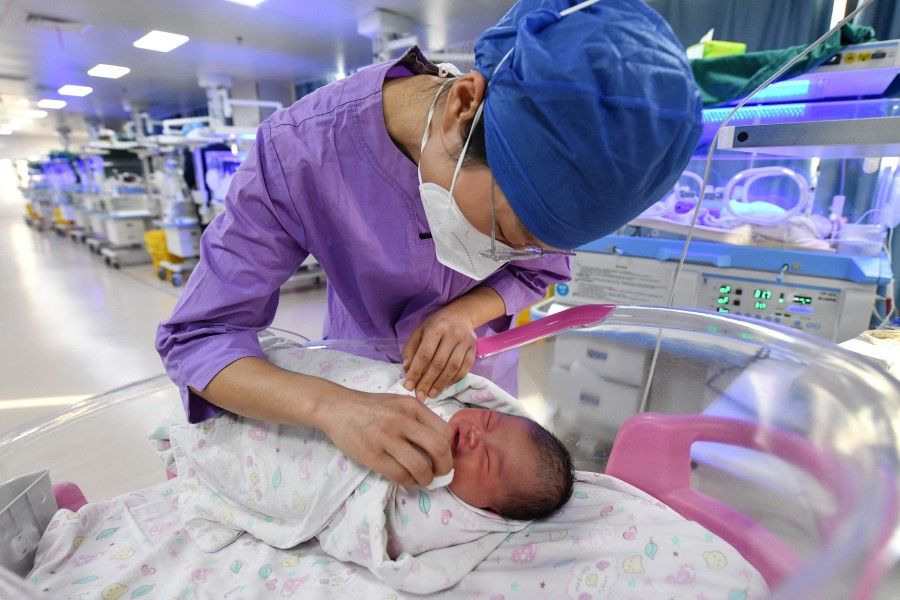China's declining population cannot be easily reversed

On the day China announced its GDP for 2022 that was far lower than the authorities' target, the decline in its population for the first time in 61 years stole the spotlight to become the trending search on Weibo.
Decades of decline
On 17 January, China's National Bureau of Statistics (NBS) announced that the country's population shrank by 850,000 to 1.411 billion as of the end of 2022, the first negative growth since the Great Famine of 1961. The number of births in 2022 fell by half compared with six years ago, to less than 10 million.
While the number of deaths in China also increased by nearly 300,000 last year, NBS director Kang Yi told the media, "The decline was primarily caused by a decrease in newborns, as well as less willingness to have babies, delays in getting married and having babies, and the shrinking population of women of childbearing age."
Given that China is the world's most populous country, the news was shocking. One netizen said, "Never thought the day would come so soon." But even before this, China's low birth rates already had population experts on alert, while negative population growth in an increasing number of provinces portended the population shrinkage.

Zhang Xuying, deputy head of the China Population and Development Research Center, said that China's fertility rate fell below the replacement level of 2.1 in 1992, signalling that the momentum for negative growth has been building in China for over 30 years. The latest census showed that China's fertility rate in 2020 was just 1.3, meaning that each woman of childbearing age had 1.3 children.
Regionally, Shanghai first showed negative population growth in 1991. In the 2020 census, 13 out of China's 31 provinces, municipalities and autonomous regions recorded negative population growth, including Sichuan, Jiangsu, Liaoning and Hunan.
While a reversal to the long-predicted negative population growth proves difficult, China's rapidly dropping birth rate over the past five years has exceeded expectations. The three years of Covid-19 has hindered economic growth and led many young people in China to be less willing to marry and have children, causing a further drop in birth rate. And compared with a short-term economic impact, the long-term challenges of a shrinking population are more severe.
... every 100 working-age persons has to support 20 elderly people - that is, five young people supporting one elderly. In contrast, eight young people supported one elderly in 2012.
Massive market losing steam
Population economist James Liang believes that the impact of the falling birth rate over the past five years on China's economy will take about 20 years to show completely, but the long-term negative impact on China is "set to be enormous", and the "grey rhino" of the extremely low birth rate is "slowly but surely approaching".

The most direct impact of the population drop is the heavier burden of elderly care. Official statistics show that China's old-age support ratio for those aged 65 and above has increased over the past ten years, breaking 20% for the first time in 2021. This means that every 100 working-age persons has to support 20 elderly people - that is, five young people supporting one elderly. In contrast, eight young people supported one elderly in 2012.
In 2022, China's working-age population aged between 16 and 59 shrank by 6.66 million while its population aged 65 and above increased by 9.22 million, worsening the country's ageing crisis. If this trend continues, China's younger generation will feel the increased pressure of looking after their ageing parents.
At the same time, it also calls into question whether the Chinese market will remain attractive to global businesses.
On the other hand, a shrinking workforce means that the demographic dividend that has long supported China's rapid economic growth is gradually disappearing. Last year, China's working-age population accounted for 62% of the total, compared with 70% a decade ago. With declining labour productivity and rising labour costs, the "world's factory" could be surpassed by its populous competitors such as Vietnam, Bangladesh and India.

A declining labour force also means fewer consumers. As the population dwindles, so does the demand for retail products, real estate and infrastructure, which limits the rebound in consumption. As a result, the property market will struggle to recover, which in turn hinders investments. At the same time, it also calls into question whether the Chinese market will remain attractive to global businesses.
Similar challenge in East Asia
Before 2022, economists from around the world predicted that China's GDP would surpass the US's to become the world's largest economy by 2030.
Bloomberg's forecasting model even predicts that any lead that China might have had may be reversed as demographics will become a drag a decade later.
But following China's weakening growth momentum, British and Japanese think tanks have pared back their growth forecasts. Bloomberg's forecasting model even predicts that any lead that China might have had may be reversed as demographics will become a drag a decade later.
However, Yuan Xin, vice-president of the China Population Association, optimistically predicted that China's total population will still exceed 1.4 billion in 2035 and 1.3 billion in 2050. He noted that the population size during the early stage of contraction will still be huge, so the country will maintain its large labour supply. Yuan believes that new opportunities can only be seized if the economic development model, population research paradigm, and marriage and child-bearing concepts can be transformed.

This population crisis is not unique to China. Other East Asian countries such as Japan and South Korea, as well as European countries such as Germany, Sweden and Denmark, are also facing declining populations. However, the long-term effects of a shrinking population in a massive economy such as China's is immeasurable for the country and the world. In the face of a much larger "grey rhino", it is difficult for China to learn from the experience of other countries.
While the demographic grey rhino is still a way off, its presence will only become more imposing. As decision-makers address urgent challenges, they should also take into consideration the long-term risks posed by population issues and identify new opportunities to resolve the crisis as soon as possible.
This article was first published in Lianhe Zaobao as "人口"灰犀��牛"来了".
Related: Large population no longer an asset to China's long-term growth | Can China reverse its population decline? | Is China facing a demographic crisis? | How to build a 'super-sized domestic market' in China | China's 'little emperors' of the 1980s are now the most burdened generation | Why Chinese women are unwilling to give birth
